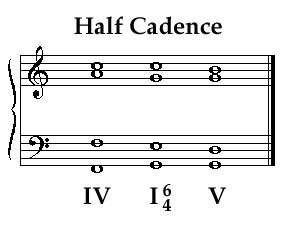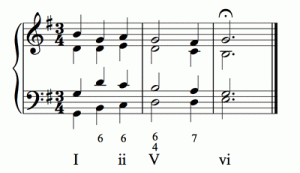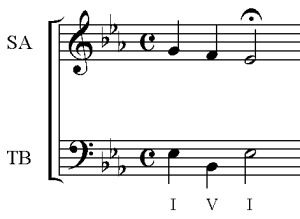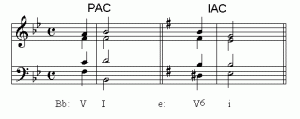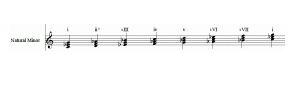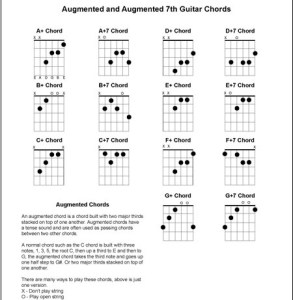For the next few weeks I’m going to talk about some common chord progressions that occur in the popular music of the last 65 years (1950-2015). This week I’ll talk about the I-vi-IV-V progression. This progression uses a common ordering of Tonic (I), a Tonic-Substitute (vi), a Pre-Dominant (IV), and a Dominant (V) harmony.
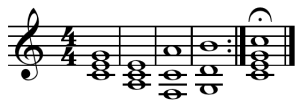
Each chord serves a specific function and allows for a logical progression that can be repeated over and over, which is therefore “cyclical.” I emphasize cyclical because the popular music of the last half of the twentieth century was oriented toward the goal of cyclical music. In other words the composer intentionally created a progression that could continually be played over and over with the same 3 or 4 chord progression. Think about how many songs you know from that era and think about how many of those songs have 3, 4, 5 or so chords that repeat over and over. This is important because music didn’t use to do that. You could argue that jazz tunes of the first half of the 20th-Century used the same idea and I would agree with you to some extent (Blues, Rhythm and Blues (and when I say Rhythm and Blues I mean real Rhythm and Blues in the style of Louis Jordan), Rhythm Changes (although this is a 32-bar form so it doesn’t really fit the mold), and I’m sure there are more). But this idea rarely pre-dates the 20th-Century.
Each chord in the I-vi-IV-V progression serves a specific function, which I will discuss now.
Tonic (I)
This chord is home base. This chord is where the resolution of the progression, phrase, and composition as a whole comes from. This chord is hierarchically the most important chord in the progression. It usually begins compositions and ends compositions.
Tonic-Substitute (vi)
Why is this chord a tonic substitute? The reason this chord is a common substitute for tonic is because it shares two of the three notes that create the tonic triad (scale degrees 1 and 3). This chord is essentially 2/3 tonic. This allows for a prolongation of tonic function (typically accompanied with scale degree 1 or 3 in the melody) and a change in harmony, which maintains the harmonic rhythm (the rate at which the chords change) and provides harmonic movement.
Pre-Dominant (IV)
A pre-dominant chord is exactly what it sounds like; it occurs before the dominant chord. The two chords that are the most common pre-dominant chords are IV and ii. These two chords occur before the dominant chord more than any other chord (although bVI is also common in minor). The purpose or function of the pre-dominant chord is to provide a bridge or a link between tonic (resolution) and dominant (tension).
Dominant (V)
This is your tension chord. This chord is used to setup the resolution of the tonic chord (I). The dominant and tonic chord are polar opposites and one can virtually not live without the other (by traditional tonal rules). The dominant pushes the listener to expect continuation whereas the tonic pushes the listener to expect finality.
When it comes to the actual chords in the I-vi-IV-V progression, there are many forms (G-Em-C-D, D-Bm-G-A, E-C#m-A-B, etc…) but they all have identical functions within the key and roman numeral analysis shows how similar they actually are. There are several songs that use this progression including:
“I’ve Just Seen A Face” – The Beatles
“Happiness Is A Warm Gun” – The Beatles
“All I Have To Do Is Dream” – The Everly Brothers
“Donna” – Ritchie Valens
“Earth Angel” – The Penguins
“D-yer Mak-er” – Led Zeppelin
“Jesus of Suburbia” – Green Day
“Blue Moon” – The Marcels
“Stand By Me” – Ben E. King
There are many more examples but you get the point. This became important for me when I began to compose because I needed something to go off of. I needed a tradition to follow and work from. This chord progression and the ones coming in the next few blogs gave me the launchpad I needed to build my own vocabulary. As always, please email me with any questions or requests for blog topics. Good luck!!
Michael Furry (Owner and Founder of Colorado Music Academy)
303-895-0998
ColoradoMusicAcademy@gmail.com
http://www.ColoradoMusicAcademy.com











